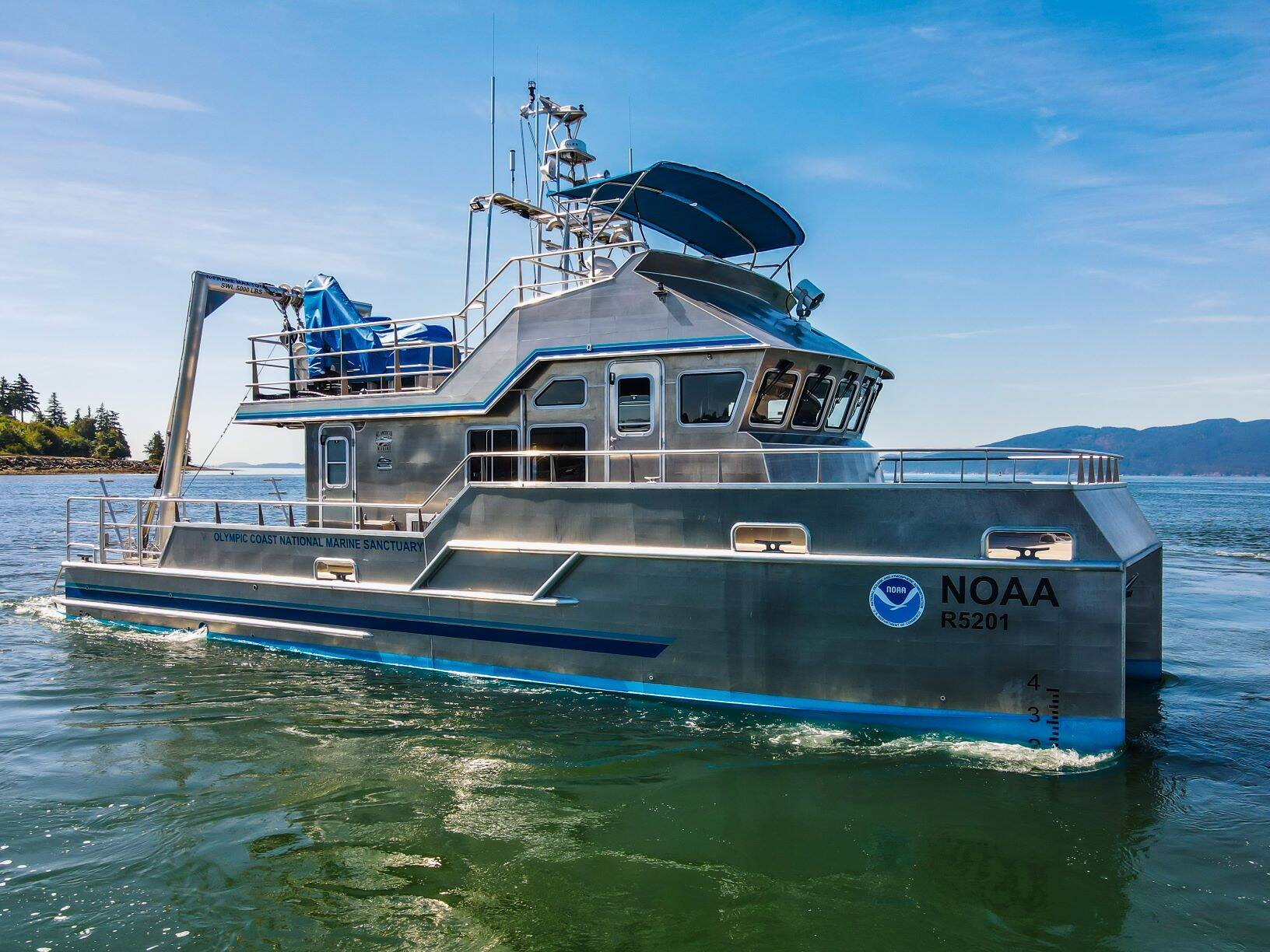Storm Petrel replaces Tatoosh at La Push
By Brian Gawley
Olympic Peninsula News Group
LA PUSH — A year after it was delivered to the Olympic Coast National Marine Sanctuary, the 52-foot RV Storm Petrel was christened at the La Push Marina.
The christening was on Friday, which was “the sanctuary’s first in-person meeting since the beginning of the COVID-19 pandemic,” said George Galasso, deputy sanctuary superintendent for the Olympic Coast National Marine Sanctuary.
The Storm Petrel replaces the 38-foot RV Tatoosh, which the sanctuary acquired in 1994. It was designed by Teknicraft in New Zealand and built by All American Marine in Bellingham.
The new vessel features an A-frame gantry and hydraulic winch capable of lifting 5,000 pounds. Its predecessor could lift only about 500 pounds, according to Workboat Magazine.
The Tatoosh was the first purpose-built vessel for the sanctuary, Galasso said. The ones prior to that had been surplus vessels.
During the field season, roughly April to late September/early October, the vessel primarily is based in La Push, which is centrally located within the 135-mile-long sanctuary. Otherwise, the vessel is kept in Port Angeles.
“La Push works well because it is centrally located and there’s few marinas on the Washington coast. When the vessel was designed, we ensured it would be able to work out of the La Push Marina. We consulted with the Quilete tribe on the appropriate size,” Galasso said.
The European storm petrel, British storm petrel, or just storm petrel (Hydrobates pelagicus) is a seabird in the northern storm petrel family, Hydrobatidae.
The small, square-tailed bird is entirely black except for a broad, white rump and a white band on the under wings, and it has a fluttering, bat-like flight.
The large majority of the population breeds on islands off the coasts of Europe, with the greatest numbers in the Faroe Islands, United Kingdom, Ireland, and Iceland. The Mediterranean population is a separate subspecies, but is inseparable at sea from its Atlantic relatives; its strongholds are Filfla Island (Malta), Sicily and the Balearic Islands.
The Olympic Coast National Marine Sanctuary is a federally protected marine area managed by the National Oceanic and Atmospheric Administration’s Office of National Marine Sanctuaries.
Friday marked the 28th anniversary Olympic National Marine Sanctuary and this year marks the 50th anniversary of the Marine Protection, Research and Sanctuaries Act, which allowed for the creation of marine sanctuaries.
The resources protected by U.S. national marine sanctuaries range from coral reef ecosystems in American Samoa, Florida, Hawaii and Texas, to shipwrecks in the Great Lakes and the Atlantic Ocean.



